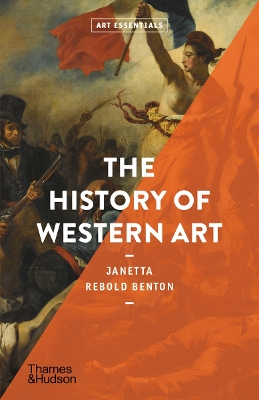Art Essentials
2 total works
The visual arts enrich our lives in many ways: bringing innovative ideas and the pleasures of beauty and emotion, but they can also confound. How To Understand Art sets out to enhance the viewer’s experience by breaking down the elements of art and sculpture to provide a firm basis for simple enjoyment as well as further investigation.
With 100 visual examples drawn from across the globe, the stress is on how to assess art objectively – a key skill for any art student, museum visitor or cultural enthusiast. Janetta Rebold Benton guides the reader to re-evaluate their experiences of looking at art by learning to move beyond ‘I don’t know much about art, but I know what I like,’ and shift towards an understanding of ‘why I like it’.
Materials and techniques are discussed – drawing, painting, printing, photography, sculpture and decorative art – making it possible to assess what can (and cannot) be done in certain media. The book also features a section devoted to six key artists who have had a particularly notable and innovative influence on the history of art: Leonardo da Vinci, Rembrandt van Rijn, Vincent van Gogh, Frida Kahlo, Pablo Picasso and Andy Warhol. Perfectly aimed at students and the general reader, this indispensable guide to the subject is well-placed to encourage questions and discussion, especially in the light of current debates surrounding class, ethnicity, gender and race.
With 111 illustrations in colour
With 100 visual examples drawn from across the globe, the stress is on how to assess art objectively – a key skill for any art student, museum visitor or cultural enthusiast. Janetta Rebold Benton guides the reader to re-evaluate their experiences of looking at art by learning to move beyond ‘I don’t know much about art, but I know what I like,’ and shift towards an understanding of ‘why I like it’.
Materials and techniques are discussed – drawing, painting, printing, photography, sculpture and decorative art – making it possible to assess what can (and cannot) be done in certain media. The book also features a section devoted to six key artists who have had a particularly notable and innovative influence on the history of art: Leonardo da Vinci, Rembrandt van Rijn, Vincent van Gogh, Frida Kahlo, Pablo Picasso and Andy Warhol. Perfectly aimed at students and the general reader, this indispensable guide to the subject is well-placed to encourage questions and discussion, especially in the light of current debates surrounding class, ethnicity, gender and race.
With 111 illustrations in colour
A concise, reader-friendly illustrated survey of Western art and architecture from prehistory to the present day.
Acknowledging how architecture, painting, sculpture and the decorative arts reflect the culture and society of their time, this latest addition to the Art Essentials series invites the reader to experience and appreciate the entirety of Western art from prehistory to today.
Focusing on the ‘history’ in art history, each of the twelve chapters opens with a question to ponder, followed by a summary of the major historical developments of the period, touching on social structure, political organization, migration, race, religious beliefs, scientific advances and customs. An exploration of these themes in the visual arts reveals how architecture, sculpture and painting simultaneously shape, reflect, and document the culture of the time and place they were created. A secondary focus explores the constantly evolving aesthetic preferences that swing between naturalism and abstraction, with each era and style either rebelling against the previous or seeking to improve it. Antecedents and outside influences are also discussed.
Acknowledging how architecture, painting, sculpture and the decorative arts reflect the culture and society of their time, this latest addition to the Art Essentials series invites the reader to experience and appreciate the entirety of Western art from prehistory to today.
Focusing on the ‘history’ in art history, each of the twelve chapters opens with a question to ponder, followed by a summary of the major historical developments of the period, touching on social structure, political organization, migration, race, religious beliefs, scientific advances and customs. An exploration of these themes in the visual arts reveals how architecture, sculpture and painting simultaneously shape, reflect, and document the culture of the time and place they were created. A secondary focus explores the constantly evolving aesthetic preferences that swing between naturalism and abstraction, with each era and style either rebelling against the previous or seeking to improve it. Antecedents and outside influences are also discussed.

